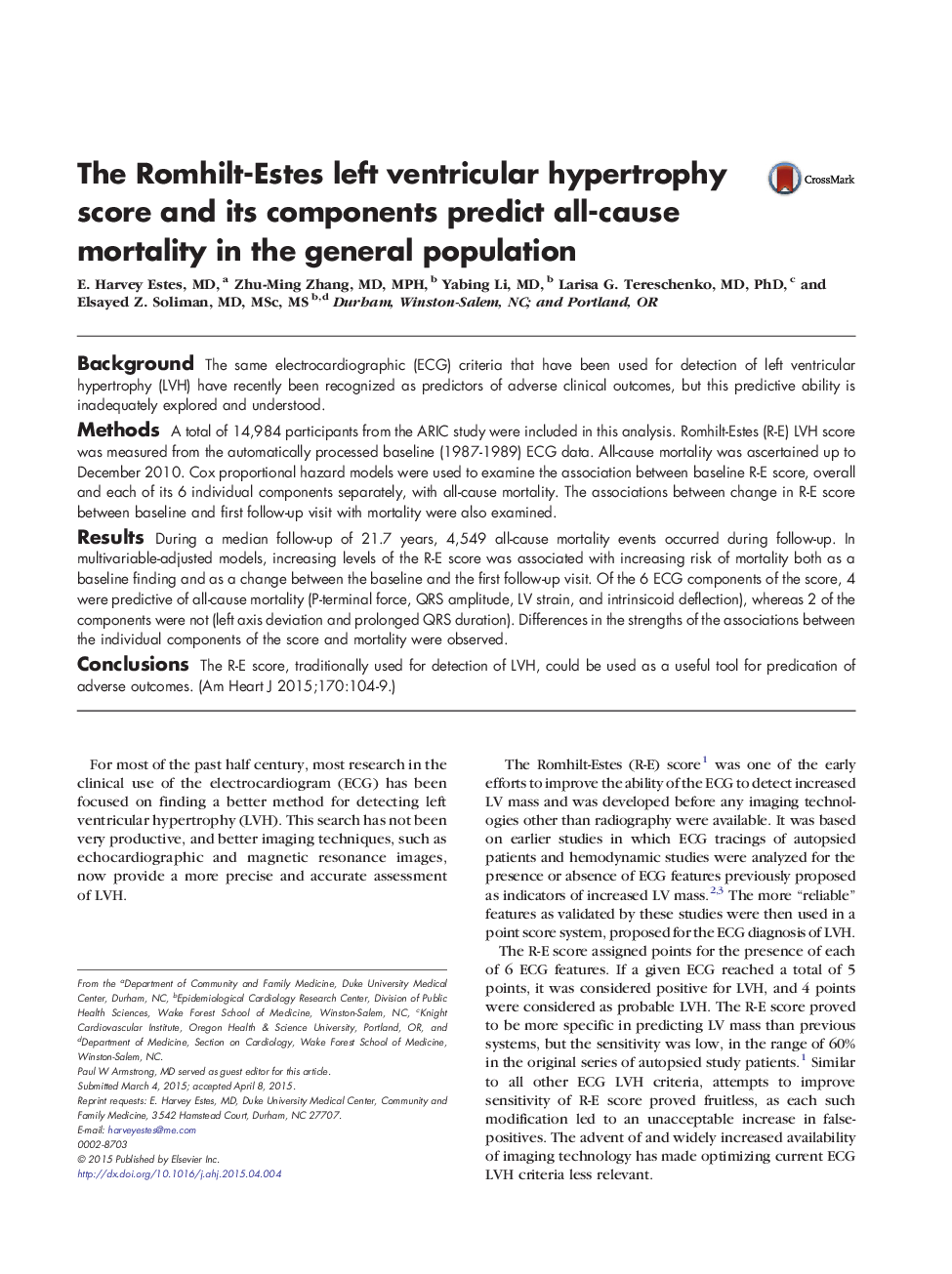| Article ID | Journal | Published Year | Pages | File Type |
|---|---|---|---|---|
| 5928156 | American Heart Journal | 2015 | 6 Pages |
BackgroundThe same electrocardiographic (ECG) criteria that have been used for detection of left ventricular hypertrophy (LVH) have recently been recognized as predictors of adverse clinical outcomes, but this predictive ability is inadequately explored and understood.MethodsA total of 14,984 participants from the ARIC study were included in this analysis. Romhilt-Estes (R-E) LVH score was measured from the automatically processed baseline (1987-1989) ECG data. All-cause mortality was ascertained up to December 2010. Cox proportional hazard models were used to examine the association between baseline R-E score, overall and each of its 6 individual components separately, with all-cause mortality. The associations between change in R-E score between baseline and first follow-up visit with mortality were also examined.ResultsDuring a median follow-up of 21.7 years, 4,549 all-cause mortality events occurred during follow-up. In multivariable-adjusted models, increasing levels of the R-E score was associated with increasing risk of mortality both as a baseline finding and as a change between the baseline and the first follow-up visit. Of the 6 ECG components of the score, 4 were predictive of all-cause mortality (P-terminal force, QRS amplitude, LV strain, and intrinsicoid deflection), whereas 2 of the components were not (left axis deviation and prolonged QRS duration). Differences in the strengths of the associations between the individual components of the score and mortality were observed.ConclusionsThe R-E score, traditionally used for detection of LVH, could be used as a useful tool for predication of adverse outcomes.
Graphical AbstractDownload high-res image (149KB)Download full-size image
